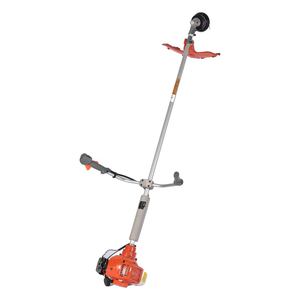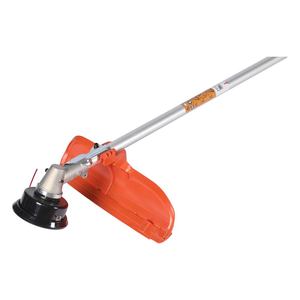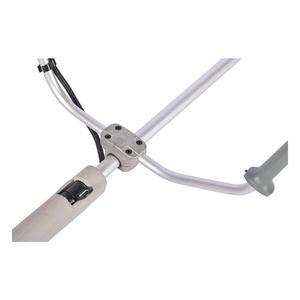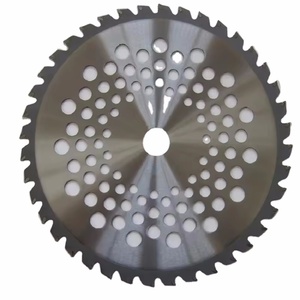(173 products available)

















































































































































































































There are several types of 30.5cc engines based on different classification criteria, which include the following:
Two-stroke vs. four-stroke engines
30.5cc two-stroke engines are very common in handheld equipment like chainsaws and leaf blowers. This is because they are lighter in weight, have a higher power-to-weight ratio, and have a simple design with fewer moving parts. On the other hand, 30.5cc four-stroke engines are commonly used in vehicles and larger equipment. This is because they are more efficient, have higher torque and lower emissions compared to their two-stroke counterparts.
Air-cooled vs. liquid-cooled engines
30.5cc air-cooled engines rely on the flow of air to cool the engine during operation. These engines are very common in lawnmowers, chainsaws, and leaf blowers. This is because they are simple in design and cost-effective. On the other hand, 30.5cc liquid-cooled engines use coolant to transfer heat away from the engine to the radiator. These engines are used in larger equipment and vehicles since they are efficient and can maintain consistent engine temperatures.
Reciprocating vs. rotary engines
30.5cc reciprocating engines have pistons that move up and down in cylinders. These engines are very common in most 30.5cc engine applications due to their simple design and easy starting mechanism. On the other hand, 30.5cc rotary engines are less common. This is because they have a complex design. 30.5cc rotary engines have an oval-shaped combustion chamber with rotating blades.
Many manufacturers share similar specifications for the 30.5 cc 2-stroke engine, which includes:
Although the 30.5 cc engine requires minimal maintenance, there are a few things that need to be done frequently to ensure the engine lasts longer and works efficiently. These include:
Many factors come into play when sourcing 30.5 cc engines, and one of them is understanding the market needs. That said, here are some of the things to consider before placing an order.
Engine performance:
Before sourcing, consider the performance of the 30.5 cc engine. There are various options to choose from depending on the workload. Customers buying these engines will want to get an engine that will power their desired machinery.
Fuel efficiency:
Another key consideration is the fuel efficiency of the engine. Sourcing for engines with high fuel efficiency can be a great selling point. Many people will opt to buy engines that have high fuel efficiency compared to those with low fuel efficiency.
Reliability:
Customers will look for engines that are reliable and can last for a long period without wear and tear. When sourcing, consider the reliability of the engine.
Maintenance:
Another important factor to consider when sourcing is the maintenance of the 30.5 cc engine. Buyers will prefer engines that are easy to maintain and have a low cost of maintenance.
Weight:
When sourcing, consider the weight of the 30.5 cc engine. Many customers will prefer a lightweight engine that is easy to carry and portable.
Features:
Consider features of the 30.5 engine. Features such as air cooling and easy starting systems can be a great advantage when sourcing. Customers will look for these features.
Application:
Finally, think about the application of the 30.5 cc engines. It's important to source an engine that will fit into various applications such as in chainsaws, leaf blowers, and trimmers among other equipment.
Replacing a 30.5cc engine requires basic mechanical knowledge and the right tools. Here is a step-by-step guide:
Tools and materials needed:
Step-by-step guide:
Q1: How do I maintain a 30.5cc engine?
A1: Regular maintenance is important to keep the 30.5cc engine in good condition. This includes changing the air filter, changing the spark plug, checking and adjusting the valve clearance, and using high-quality lubricants. Users should also use high-quality fuel and lubricants recommended by the manufacturer to avoid damage to engine components.
Q2: What is the difference between a 30.5cc 2-stroke and 4-stroke engine?
A2: A 30.5cc 2-stroke engine completes a power cycle in two strokes of the piston, while a 30.5cc 4-stroke engine completes a power cycle in four strokes. The 2-stroke engine is simpler, lighter, and has higher RPM potential, making it suitable for handheld and portable power tools. On the other hand, 4-stroke engines are more fuel-efficient, have better torque, and are commonly used in applications where these characteristics are advantageous, such as in larger, more powerful, and more efficient engines.
Q3: Can I use my 30.5cc engine for small generator sets?
A3: Yes, the 30.5cc engine can be used in small generator sets, but it depends on the engine's configuration and the generator set's design. The 30.5cc engine is relatively small and suitable for portable generators, but it may not be sufficient to power larger electrical loads due to its limited displacement and output.
Q4: What are the common problems with the 30.5cc engine, and how can they be solved?
A4: Common issues include starting difficulties, power loss, and overheating. Starting problems can be solved by checking the fuel system, spark plugs, and ignition system. Users can clean the air cooling system and check the engine's cooling system to solve the overheating problem.
Q5: What is the expected lifespan of a 30.5cc engine?
A5: The expected lifespan of a 30.5cc engine depends on usage and maintenance. With good maintenance and proper usage, the engine can last for several thousand hours. However, the engine's performance and efficiency may gradually decline over time.